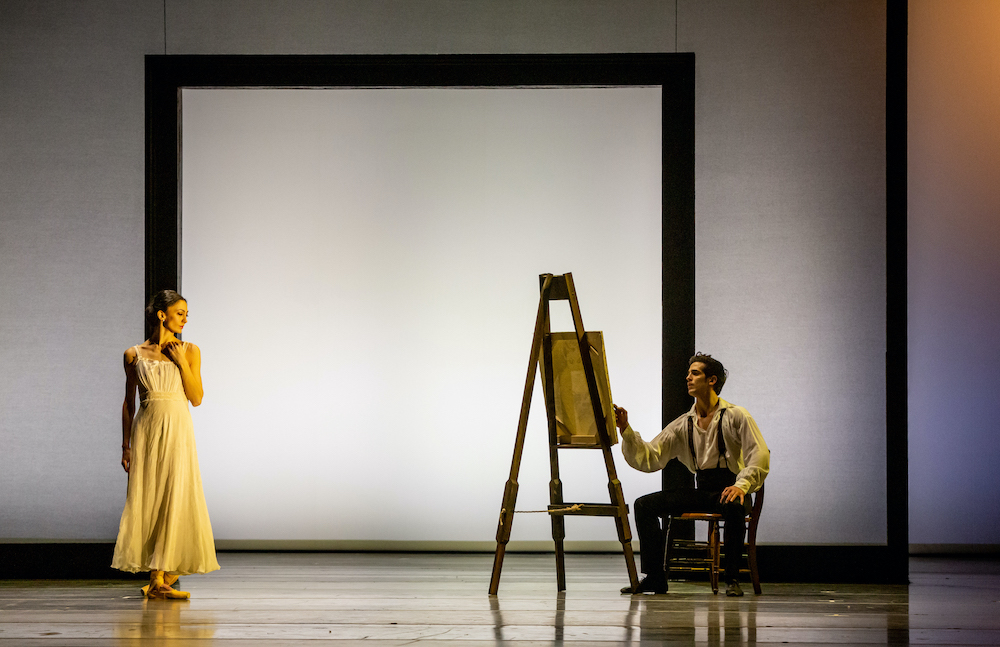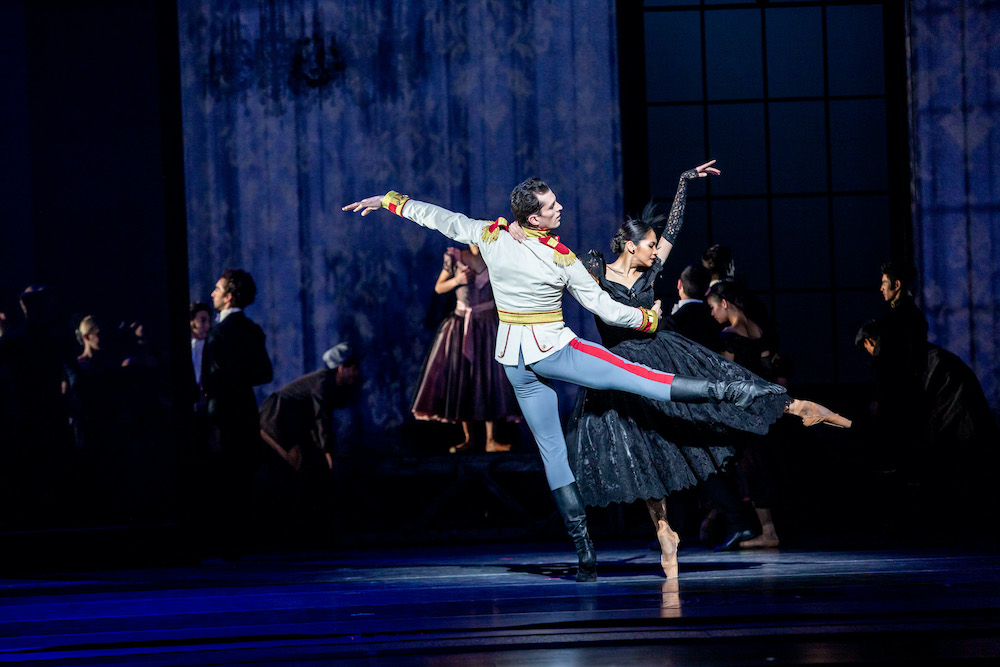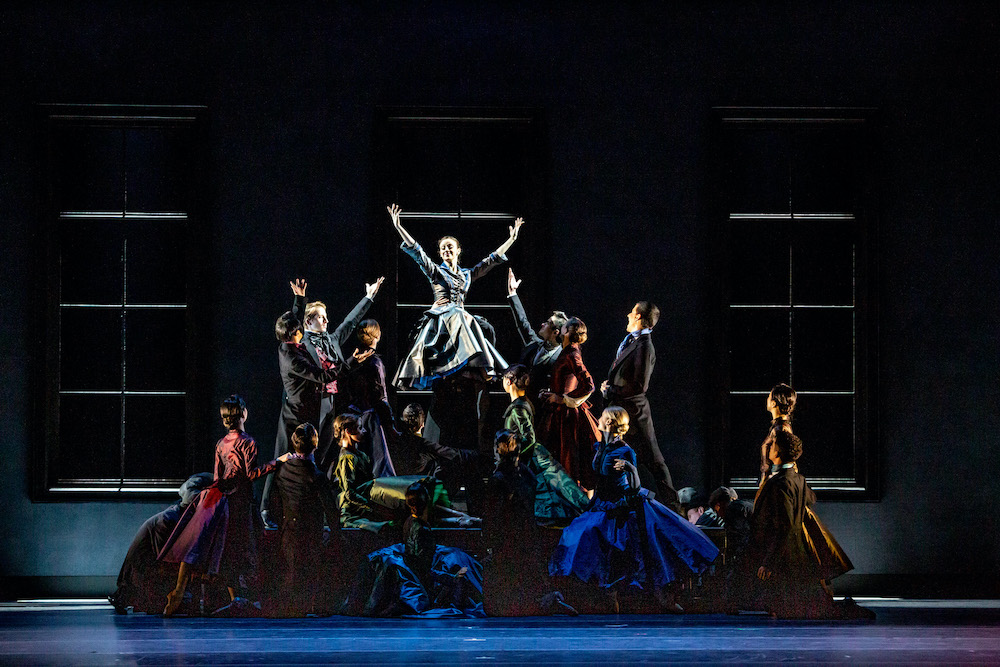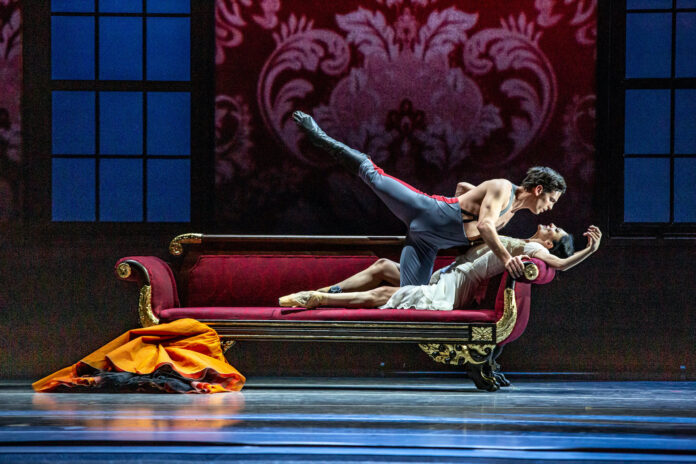If choreographers ruled the geopolitical world, if they and other artists helmed social and interpersonal realms, wars would be enacted without loss of life. Stories of broken hearts, racism, and all of life’s other ups and downs would conclude amid applause, subject to post-performance conversation. Instead of one-offs, danced dialogues would be ongoing, infused with the energy of multi-season residencies.
This, according to Joffrey Ballet artistic director Ashley Wheater, whose esteemed Chicago company has announced a partnership with Cal Performances that will bring the Joffrey for four engagements over the next eight years. In the 1970s, the company came to the UC Berkeley campus every summer, resulting in the Berkeley Ballets and several dances still in its repertoire; in 2022, the company completed its second, six-year Cal Performances residency. The relaunching of the most recent residency period begins with a splash March 15-17 at Zellerbach Hall, when San Francisco Ballet choreographer-in-residence Yuri Possokhov’s Anna Karenina makes its Bay Area premiere. The full-length narrative ballet features an original score by composer Ilya Demutsky and will be performed live by the Berkeley Symphony, led by conductor Scott Speck.

Possokhov’s stage adaptation of Leo Tolstoy’s epic 864-page—that’s 239 chapters and 364,000 words—novel streamlines its narrative, managing in two 50-minute acts to tell the well-known story of betrayal and Imperialist Russian social transformation. Central protagonist Anna finds herself in a cold, loveless marriage to the 20-years-her-elder Alexey Karenin, and despite that its consequences are destined to impact her social standing and young son, she enters an affair with Count Vronsky, a dashing cavalry officer. Secondary characters Kitty (Shcherbatskaya) and (Konstantin) Levin play no less important parts in the novel, and especially in the novel’s final chapters and the epilogue of Possokhov’s ballet.
Central to the Berkeley production are minimalist yet state-of-the-art sets and meticulously period-specific 19th century costumes by British designer Tom Pye, which bring authenticity and a contemporary genius to the work. Mood and transitions are graced with exquisitely rendered lighting by David Finn, and a convincing sense of place, time, and movement is created with astonishing projections by Finn Ross.
Possokhov’s classical ballet vocabulary is extended by contemporary and folk dance styles that reveal the influence of the United States, Europe, a diversity of Baltic countries, undoubtedly Russia, where he was trained, and his native Ukraine. The ballet is a coproduction of the Joffrey with the Australian Ballet and was awarded upon its 2019 premiere with the Benois de la Danse International Prize (long considered the “Oscars of Dance”) for Best Choreography.
Wheater danced with San Francisco Ballet from 1989 until 1997, when he retired and was appointed the company’s ballet master and, subsequently, assistant to the artistic director. He has led the Joffrey since 2007.

In a phone interview, he says the resumption of a longterm relationship with Cal Performances and return to his former stomping grounds is thrilling. “It means so much to Joffrey when you look at the relationship with Cal Performances. It is long and deep. I respect and applaud (executive and artistic director) Jeremy (Geffen) for his bravery coming out of Covid, wanting to make sure the Bay Area thrives with the best of the arts. It’s an honor to come back on a regular basis. The full orchestra, with live music for our presentation, is an undertaking. And for me personally, after spending 20 years at SFB, coming to the Bay Area is coming home for me.”
Interest in narrative ballets is increasing, according to Wheater and others in the field of dance. Often, there is special interest in new works based on great literary works, such as the Joffrey’s presentation in 2022 of choreographer Cathy Marston’s Of Mice and Men. Audiences are gravitating to the story ballets, but curation is essential. “It’s how you tell those stories and what we learn from stories that are about us. The way to shine new light on any narrative is to reflect it back on your audience. We’re vulnerable human beings and we tend to make the same mistakes again and again. There’s huge power in storytelling.”
Instead of fairy tales about swans and princesses, the Joffrey is staging a ballet about the opioid crisis (Studies in Blue), and next year, a ballet developed based on writer Ian McEwan’s novel, Atonement. Contemporary stories, he suggests, speak more directly than do story ballets such as Swan Lake or Sleeping Beauty.
Wheater is a hands-on director and in addition to teaching daily company class, is involved in every aspect of the company; from technical and artistic matters to the day-to-day work of assisting guest choreographers and rehearsing the repertoire.
“That is my choice,” he says. “My fundraising meetings happen in the evenings and my administrative staff meetings are in the morning. For me, it’s imperative I’m in the studio with the dancers daily. The company must understand the qualities and values a director wants out of the art form. How dancers interpret movement is what interests me.”
The roles in Anna Karenina are meaty. Dramatically, the shading dancers bring to them requires that the score, lighting, projections, costumes and sets support the choreography’s subtle tones.
The score, Wheater says. demonstrates Demutsky’s incredible talent for writing sweeping, passionate music. “He delivered something so beautiful, glorious and complicated, with human voice throughout and complex rhythms. You think of a waltz as written in 3/4 time, 1-2-3, 1-2-3, but he also has a five in there. It’s filled with his brilliance: with beauty, but also the danger of the story. Yuri was so inspired by Ilya’s score, his creative juices were alive, fluid, organic. And he had 100 percent from the company dancers.”
Though the ballet reduces Tolstoy’s hundreds of chapters to 12 scenes, it somehow maintains a universal narrative rife with empathy for its characters, even when they make mistakes. Believability here is crucial. Wheater says the key to achieving that physicality lies in honoring the choreography.
“You don’t enter the studio and pretend to be the character,” he says. “You enter and become the character. There is incredible technique and artistry, but dancers must also be unafraid in the studio to go way beyond the step, the veneer. Character must grow. You find your way into a role by rehearsing it.”
The ballet ends in the same way as the novel. Wheater is a huge reader of fiction and is amused by people who ask why the production doesn’t conclude with Anna’s suicide. “We end with Kitty and Levin and their wonderful commitment to love. That’s the way it’s written. The whole point of the book is not to say we make mistakes, but how do we draw, cross, and honor a line. It’s one of the world’s top 10 books because people identify with the love and happiness found at the end. They’re a part of life.”

Our craving for happy endings that do not deny the traumas of war, social and political disruption, and human frailty, he suggests, is significant, regardless of era or setting: “We live in a world today that has so little empathy and forgiveness and it’s not doing us any good. Look at our leaders; there’s not a lot of love there. Finding humanity and beauty in people by going to the arts is a wonderful thing. We’re always at war in one way or one place or another. You need to take a break from what’s on the news. If we don’t find balance in our lives, we’re not going to make it.”
Movies, symphonies, ballets, visual art, and theater enrich people, Wheater insists. “When I think about the times today, I think about Kurt Jooss’s The Green Table, created in 1932. We’ve danced it many times and it’s as relevant today as it was then. We still have learned nothing about negation and the cost of war. And with literature like McEwan’s Atonement—can one atone? What is the price of a lie that ruins people’s lives? We live in a world today that all people do is lie. We need the arts: they’re essential for us to complete the story of who we are as human beings.”
ANNA KARENINA March 15-17. Zellerbach Hall, Berk. Tickets and more info here.





